Island Connoisseur – Amanda Lindroth
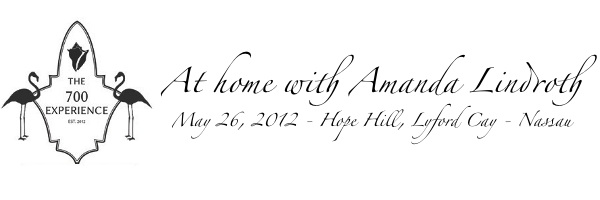
There is a bit of irony in using this photo of Amanda sitting seaside in a bright fuchsia caftan given she claims color has just been added to her otherwise neutral pallet. She credits fellow interior designer, Miles Redd, a man who isn’t afraid to use color and as a result legitimized it for her. It’s after sneaking a peek into Amanda’s closet I will even go so far as to say she may just live in these floor-sweeping caftans, colorful or not. While looking the part of a laid-back islander, she is by no means one. I dare to make such a statement with a complimentary undertone. Look up “juggler” in the dictionary and you may just find her name there, she puts on the act quite well. Wife to local property developer, Orjan Lindroth, and a mother to their daughter Liza, Amanda is also a notable interior designer whose work has been featured in magazines such as Coastal Living, Veranda Magazine and Real Living Magazine. Having overseen design projects of New Providence’s Old Fort Bay to Harbour Island’s Dunmore Hotel and Schooner Bay in Abaco – to name but a few – she has made a name for herself by preserving the historical integrity of great houses and commercial projects, all while breathing fresh life into the sundrenched parlors and flanked entryways. By displaying a clear appreciation of what once was with the preservation of Nassau’s Balmoral Club and what could be with Schooner Bay in Abaco she is an Island Connoisseur in every way.
VP: Let’s get straight to it – tell me about the interior design industry in the Bahamas and what are some challenges that interior designers face here in the islands?
AL: There’s a little taste game starting here. Well-known interior designers are being hired from away – Miles Redd is one, Tom Scheerer is another. That is very exciting, there was certainly a design malaise happening here for a little while. I think the challenge here is the same challenge that we are all completely aware of, what we do is difficult. It is difficult to buy furniture, it is difficult to ship furniture, it is difficult to do it with any economy of scale. This is a challenging expensive endeavor, so you have to be pretty brave to take it on. So what has happened on the island is that really elegant families who have lived in properly decorated houses elsewhere sort of tolerate a bit of shabbiness here that may have gotten a decade or two shabby. I try to monitor my client’s expectations; I say to my clients let’s do something successful. To do that I may need to adjust your thinking, it is not going to adjust the quality by any means, I just know how things can work and things can fail here in the islands. Sometimes these very elaborate schemes are not executable, they’re not executable in New York, so let’s not try them here. Here we attempt to do things that are successful.
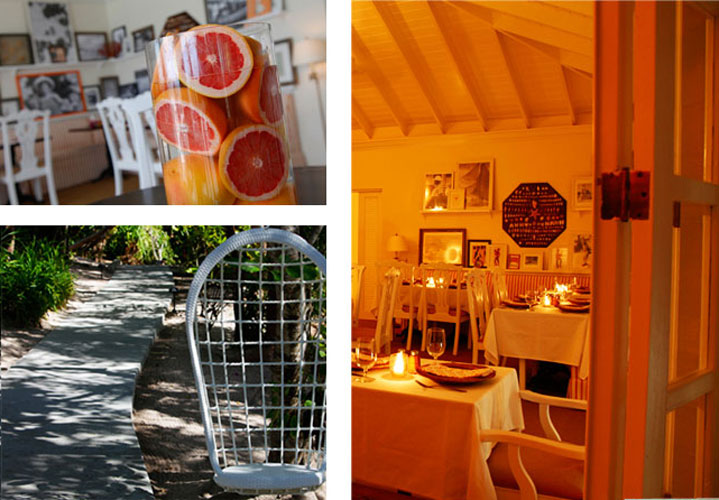
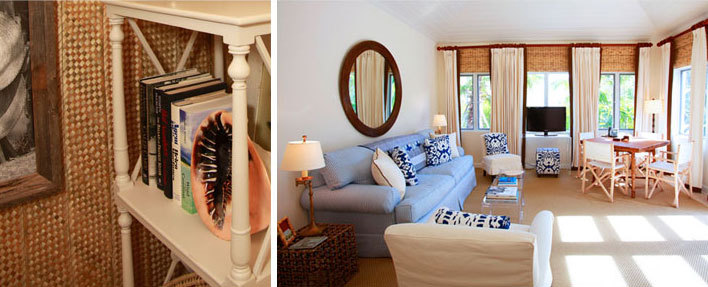
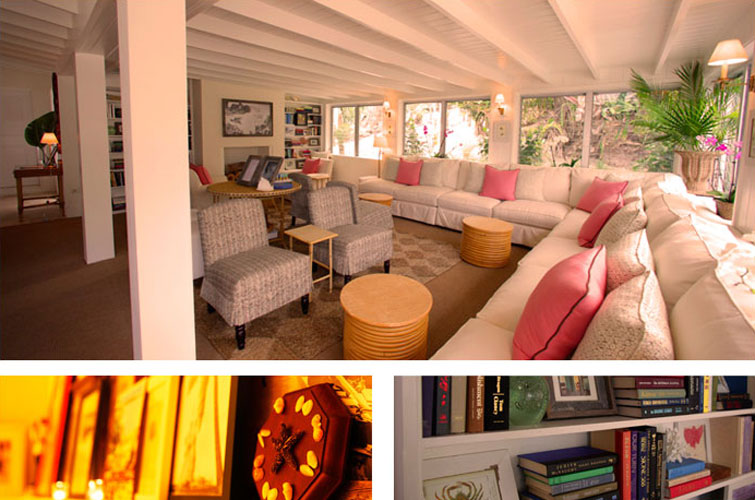
VP: Before moving to Nassau in 1992 you were the Public Relations Director of Gucci in the UK, tell me about that…
AL: I was on Pan Am with my first husband headed back to London, which was home at the time. We had cashed in all our miles because the airline was clearly about to go out of business. So we were in first class on Pan Am using up miles and there was a story in Manhattan,inc. on the fact that Maurizio Gucci had just hired Dawn Mello, the person who had really created Bergdorf Goodman. Maurizio had hired Dawn to reinvigorate the floundering Italian fashion house. I thought to myself after a few years of not working that it was high time to get back to work so I wrote Dawn a letter. As she was American I knew that the WWD experience would be comforting to her and I being based in London at the time, well she could tick that off her list, so yes, she hired me. I remember the phone ringing, they woke me up to get the interview, on the other end of the line a voice said, “this is Dawn Mello’s office calling from Milan” – it’s like 8:45 in the morning and I’m still asleep. Dawn and I loved each other so it was kind of a fab time. Tom (Ford) was not the big super star that he is now. At the time he worked under Richard Lambertson who Dawn had brought in from Geoffrey Beene to be the Design Director. Tom then was Chief Women’s Ready-to-Wear Designer. Needless to say the rest is history. Richard left the company and Tom designed that particularly powerful collection. I believe it was Resort or Spring/Summer of 1992, I had already returned to Nassau but I remember it had caught every ones eye and he became this incredible overnight success.
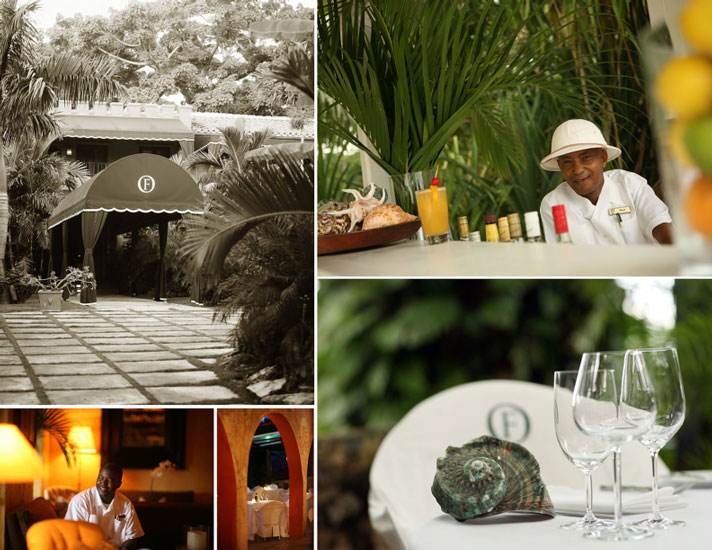
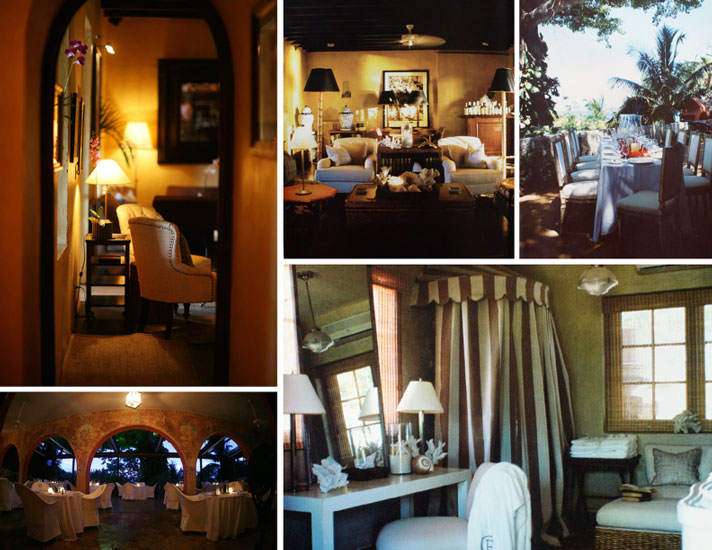

VP: How has your experience at Gucci and your travels influenced your approach to interior design? Also am I right in thinking that you somewhat fell in to interior design?
AL: Totally, 100%. I am kind of fascinated by this question because I was watching an interview the other night and there was a discussion about bestselling author Malcolm Gladwell who wrote Outliers. Gladwell’s theory is that it takes 10,000 hours to become an expert at something. To be honest, even at 10 years old I was decorating – interior design magazines were the only magazines I have ever been interested in – in my younger days I was flipping through House & Garden or whichever design magazine my mother had purchased. I have always been drawn to interiors much more than fashion. Now it is the kind of thing that once Liza is asleep I am studying on the computer or pouring over in books. I fell in to it but even when I was at Gucci I remember thinking when can I get on my bike and go to Lots Road or when can I explore John Stephanidis’ shop and visit Colefax & Fowler, that yellow famous Nancy Lancaster room located in Mayfair London. These were just some of the iconic designers that I “studied” – especially in London my passion was just fed – I’ve actually never really thought about this Vanessa but it probably all really started for me in London. Also think of the English style, there is always a place to put a drink, a place to put up your feet, a reading light to sit under and there are always big comfy down sofas to sink in to.
I grew up in a very very very stylish home, my mother is a complete style diva and this talent of mine, if you can call it that, certainly came from her. She is a modernist though, so we grew up in two modern houses in Florida. My mother claims that my father tricked her and took her on their honeymoon to Florida in the sixties and wouldn’t let her leave. She said we weren’t rich enough for Palm Beach and she wouldn’t live in an ugly ranch house. She hired a really talented, truly talented, modernist architect to build what in our family we referred to as the “little house” and the “big house.” The little house was like a mid-century bauhaus in a cool neighborhood in Boca Raton and the other larger house was at the beach, more international style, modern, another Frank Llyod Wright looking design. This house had eleven different flat roofs all of which leaked because that’s what they do in the tropics. So I grew up in a very stylish way but I probably did not know I hated the hard edge of the modernism until I went to London. I think what my childhood homes taught me is scale, and if I have any talent at this, and one is certainly always learning, I am better at scale than color, I am better at scale than a lot of things in decorating. I like rooms to have ups and down, play if you will, and for all the elements not to be at the same height. Modern rooms are often, as you know, designed to have everything the same height, which is cool but I prefer sort of the English way. I think it takes a certain amount of talent to not have everything symmetrical in a room.
VP: Do you recall there being an interior that really inspired you when you first arrived to Nassau?
AL: Well as a little girl I came to the Lyford Cay Club with some friends of my parents and I always remember thinking how pretty it was and how pink and how “clubby” – I think that it is designed to reflect a pretty compelling and romantic period. The whole sort of idea of men in blue jackets, suntanned and holding a Rum Dum in the 1950’s. Whether I am placing a glaze over it, which I probably am, I still kind of love the idea of that time and I think we are so fortunate to have Lyford Cay. It is as glossy as it ever was, maybe even more glossy – a huge effort has been made at the club in the last ten years to really re-capture that period and it has been completely successful in every possible way. Tom Scheer the decorator at Lyford has so nailed it, everything he touches there is such a success. I mean I laugh when I tell this story but Tom and I spend a lot of time together and after a Rum Dum or two one night we thought up that the men at the concierge desk should have a pink stripe running down their pant legs, I mean why have black? We were so proud of ourselves as it is all in the details.

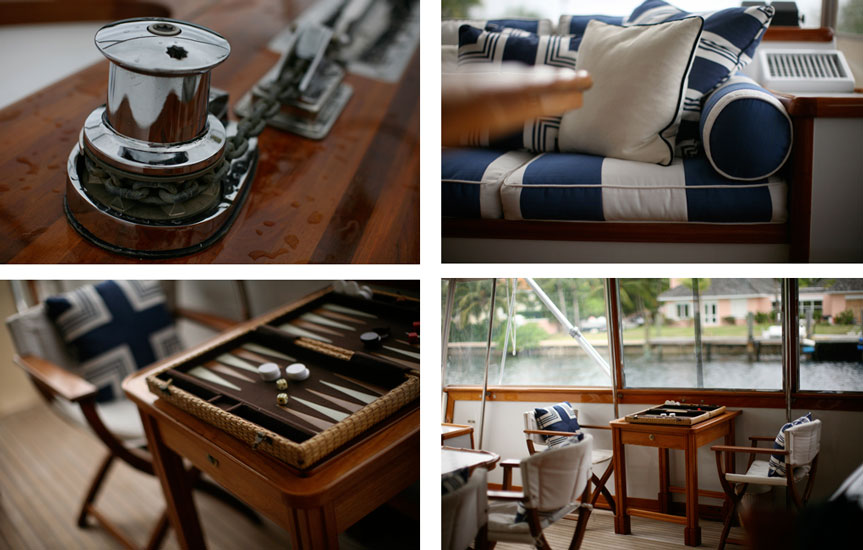
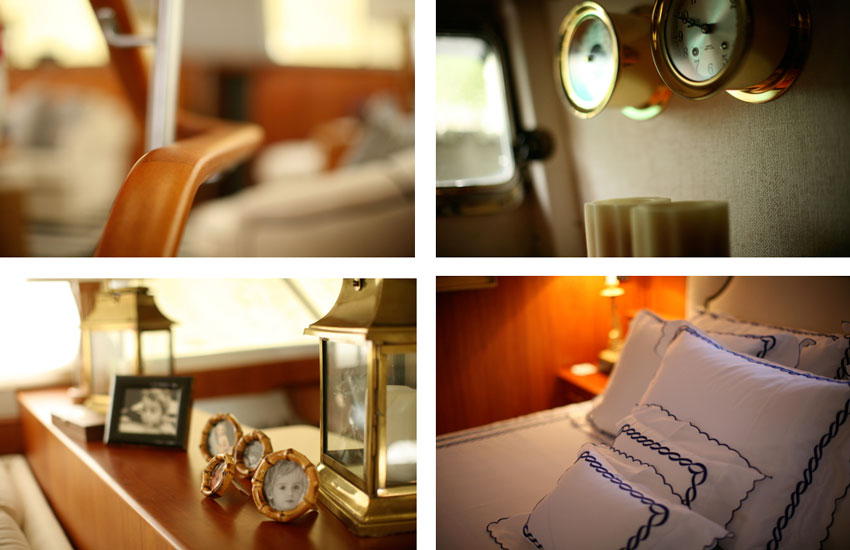
VP: You’ve designed the interiors for The Balmoral Club, Old Fort Bay, The Dunmore Hotel on Harbour Island, a yatch and stables even. If you were given the choice to design an interior that does not fall under any of those categories, what would it be?
AL: Oh my gosh, hmm. I know I particularly like the challenge of commercial interiors. When I walk through the airport here in Nassau, the Lynden Pindling International Airport, I always think to myself, I wish they had hired me to consult. The airport is so well designed but we could probably with a tiny, tiny, tiny little bit of money and a little bit of imagination create some moments in it, punctuating it – add experiences that are more Bahamian, more “islandy.” That was not obviously their agenda when they designed it to make it super “islandy” although I think it is beautiful and I love the modern architecture of it. Modernism to that scale is really hard to do but I think that there could be little moments that really capture the essence of island life.
VP: Right, you know what I’m about to ask you…please, please tell me what you picture one of these moments being.
AL: Even if there was a charming thatched awning – it has to be something that isn’t cliché and tired, originally I thought pairs of rattan chairs throughout the airport. There has to be charm added, this is really what commercial spaces lack. Whatever that moment is it would add a sense of welcome to the space, believe me there is no criticism here. I mean I would love to do work for the Ministry of Tourism, create moments in public spaces that speak to the experience, a moment that identifies the Bahamian lifestyle. I love branding and I think that it is very important to brand an experience.
VP: Earlier this year I did a BAHA-Styles piece about the 5 steps to creating instant island style in your home. Which 5 items would make your list?
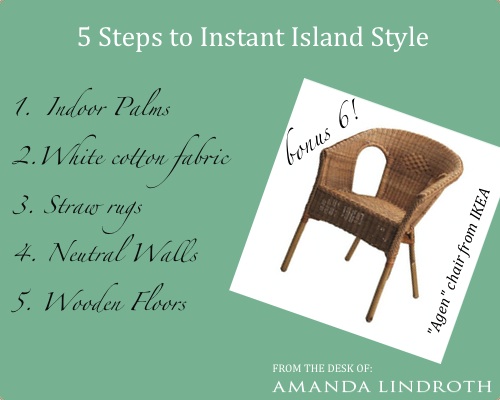
The rattan chair pictured here is the one used in most of Amanda’s projects. To purchase go here – she suggests giving it a few coats of oil-based paint.
VP: If you had to describe your Island Personality which island would it?
AL: Abaco, specifically Schooner Bay. Schooner Bay is a complete blank canvas for me. I am having so much fun with that project because I get to design in different ways. For example I helped Bahamian artist Antonius Roberts with his home. Then I am helping another buyer with his home and he has a slightly more modern take when it comes to his preferred design style. We are using again vintage rattan but in a slightly more modern color. I was once a Harbour Island “groupy” – for about twenty years I’ve been all about Harbour Island and I still love it there. That said, Schooner fits the next chapter of my life in which I want to be more contemplative and healthier. At Schooner we grow all of our vegetables and we live in such nature. I took India (Hicks) and David (Flint Wood) up for a weekend and it is one of those places that you are so relaxed that going to bed at 9 o’clock at night is normal. Dinner at Schooner is a really unique experience. You get dressed and go down to the thatched roof cabana where the wind is blowing through, there you see a lit walkway with tiki-torches leading you to the cabana. You are sitting under the stars and they are barbequing meat and fresh fish for you. After dinner there is a bonfire on the beach waiting for marshmallows to be roasted over it and a glass of wine enjoyed around it. It’s really special.
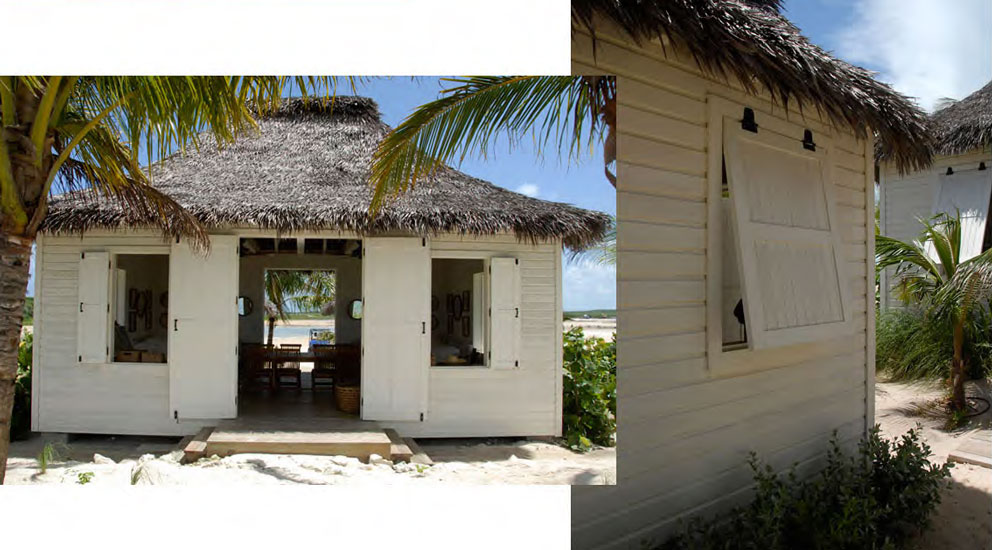
Schooner is a harbour village. It is not a gated community with a marina. It is meant to be more authentic than that. We have local fisherman coming in to the community and selling fish. We have Nassauvian business leaders purchasing homes with the thought that in a few years they might prefer to split their time between Nassau and Abaco, or they may choose to live up there permanently. I think people are feeling compelled to look for a more natural setting. The thought at Schooner Bay is to start a wellness center there where you are predicated on a schedule – you hike at this hour, you do yoga at this hour, you meditate at this hour, and you eat at this hour. I like the elements of it all. India came up and as you know she is a runner, well we have these forests to explore and off she went. Everything about Schooner is thought out and meaningful and that will be the draw.
Yes, Schooner Bay definitely, it is the right island persona for this chapter of my life.
VP: I look forward to seeing what this chapter brings for you.
AL: As do I!
A heartfelt thank you to Amanda for being a part of the experience and serving up dose-after-dose of island inspiration.

P.S. During the interview Amanda referred to a “list” several times –“There are elements that add charm, we have a list at our office and we call it THE list. It’s after we have done the scale of a room, the fabrics of the room, placed the rugs and probably placed the major bits of furniture. We then go down the list and place the following… It is me belief that equally a list can be made for commercial interiors.” How many of these “elements” can you check off on your list?
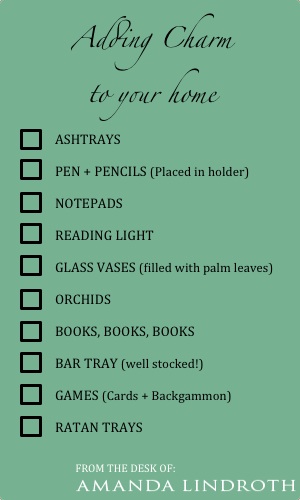
P.P.S. Read an article here to see how Amanda is redefining the traditional bar tray.
To see Amanda’s portfolio visit here.
Photos via Amanda Lindroth

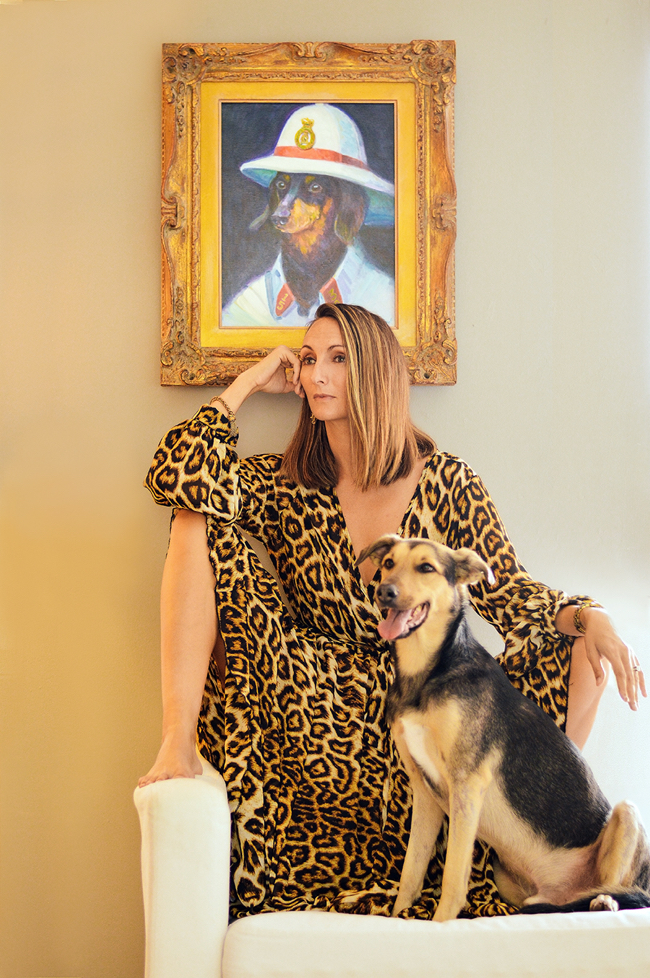
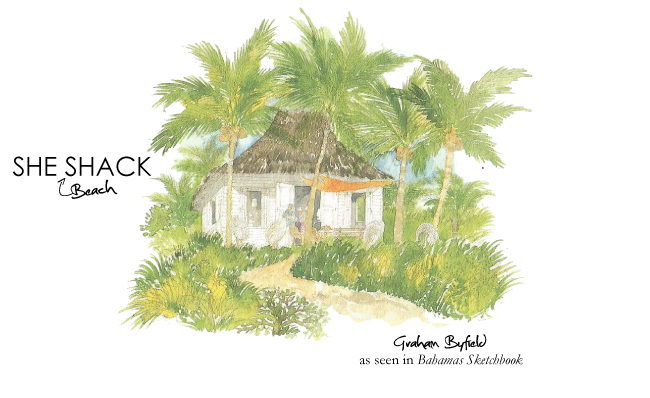
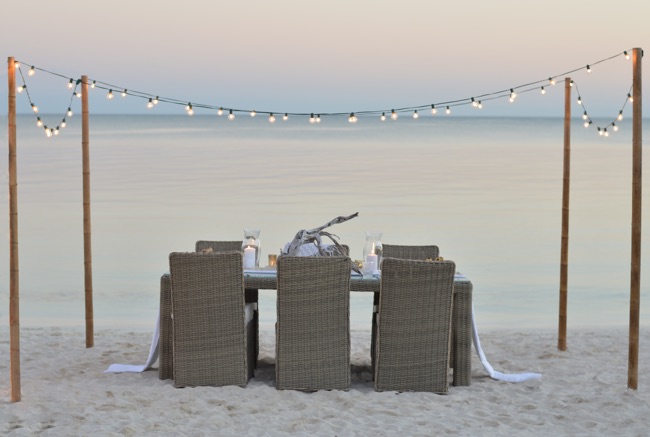
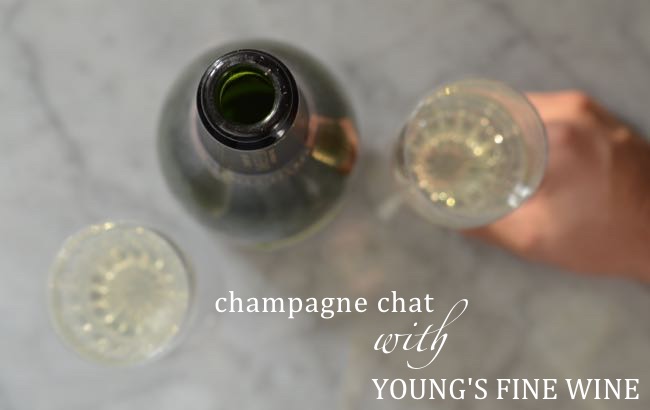
Join the conversation